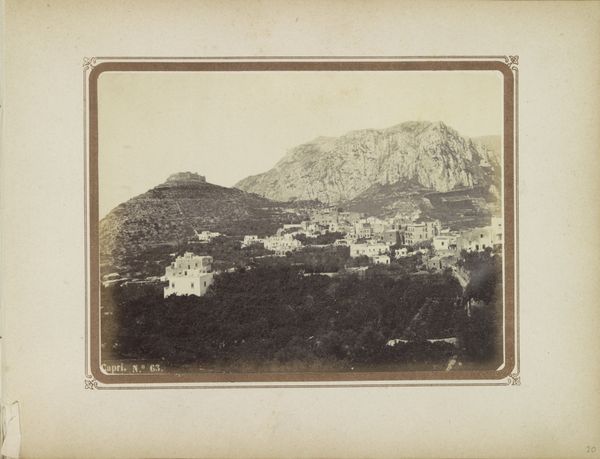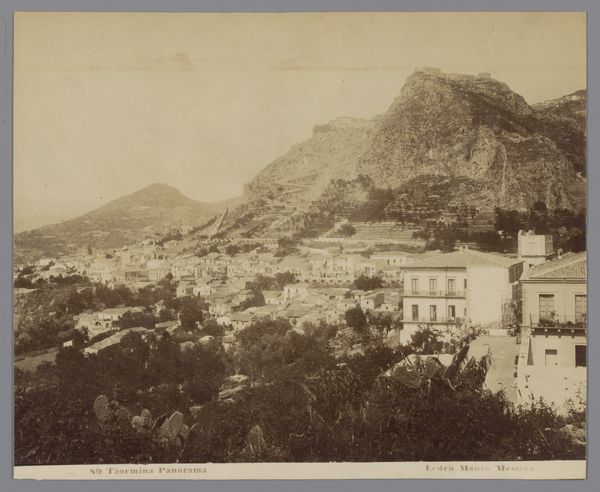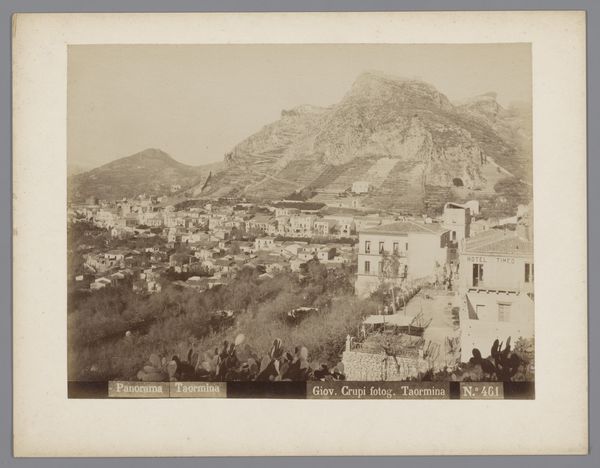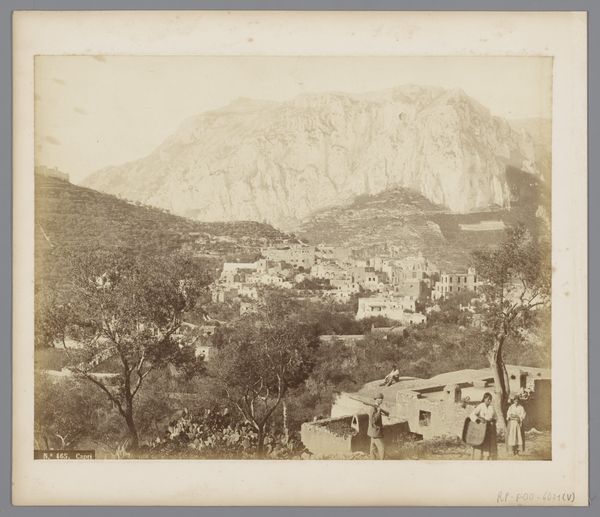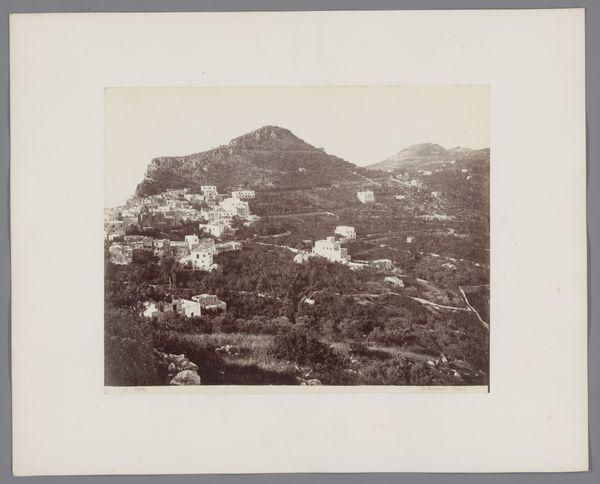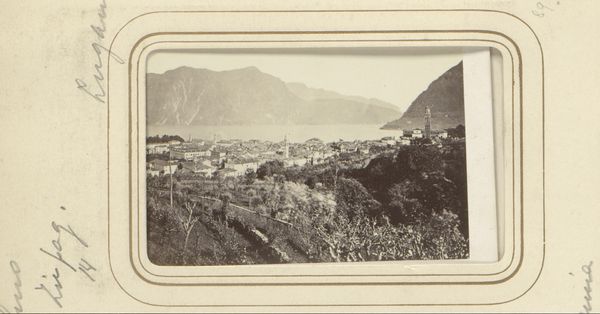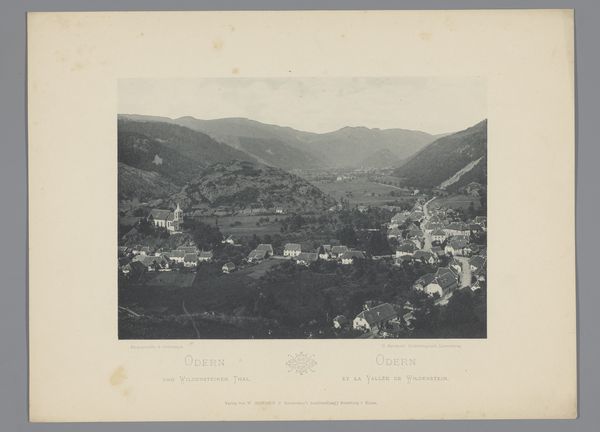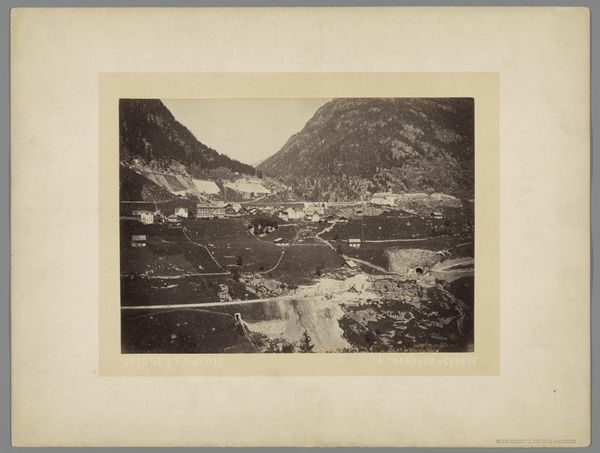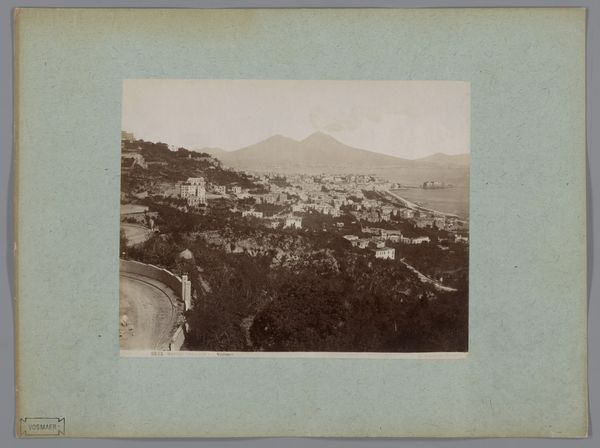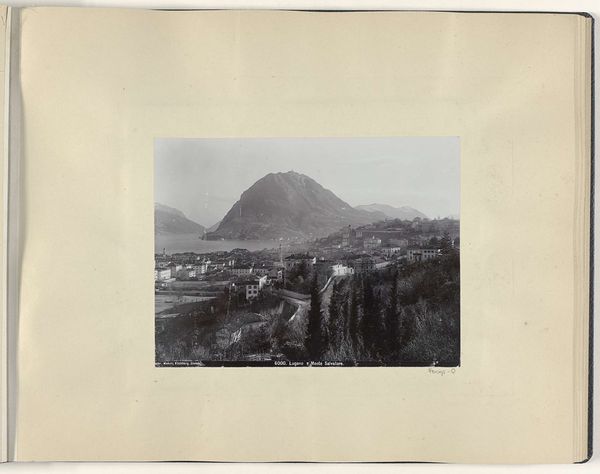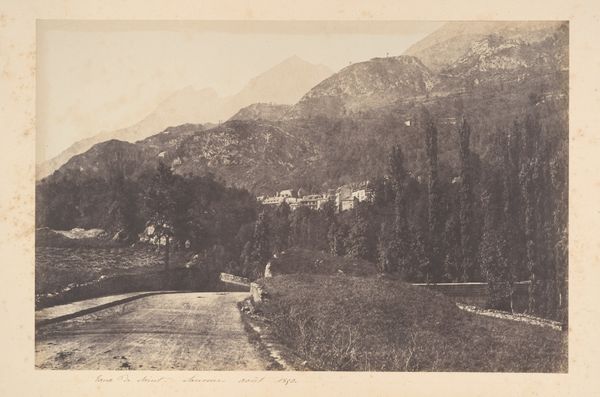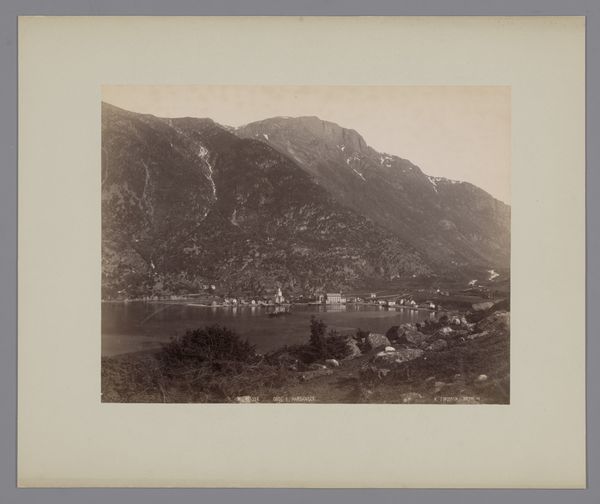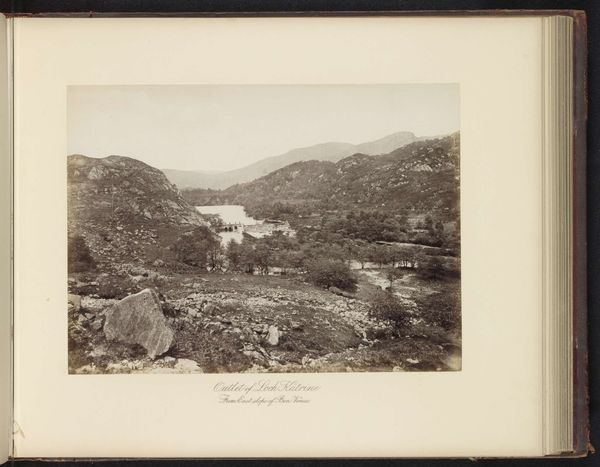
print, photography, albumen-print
#
photo of handprinted image
#
16_19th-century
#
pictorialism
# print
#
landscape
#
photography
#
cityscape
#
albumen-print
Dimensions: height 309 mm, width 384 mm
Copyright: Rijks Museum: Open Domain
This landscape photograph of Capri was taken by Giorgio Sommer, using the wet collodion process. This method, popular in the mid-19th century, involved coating a glass plate with light-sensitive chemicals right before taking the picture. The resulting image is incredibly detailed. You can see the textures of the stone buildings and the rough terrain of the landscape. The collodion process gave photographers unprecedented control over the tonal range and sharpness of their prints. Consider the labor involved in creating this image. Sommer would have needed a portable darkroom to prepare and develop his plates on location. He was likely catering to the burgeoning tourist trade, producing images of picturesque locales. Photography, in its early days, was both a scientific marvel and a commercial enterprise. The material qualities of photographs, from the chemicals used to the printing process, reflect a society grappling with new technologies and modes of production. It reminds us that even seemingly straightforward landscape photography is deeply intertwined with material processes and social contexts.
Comments
No comments
Be the first to comment and join the conversation on the ultimate creative platform.
